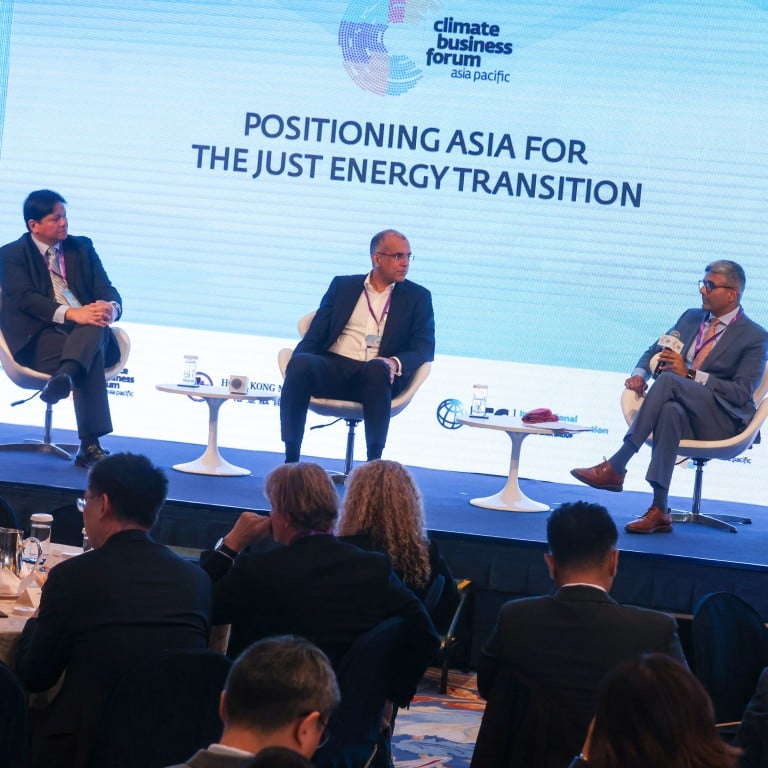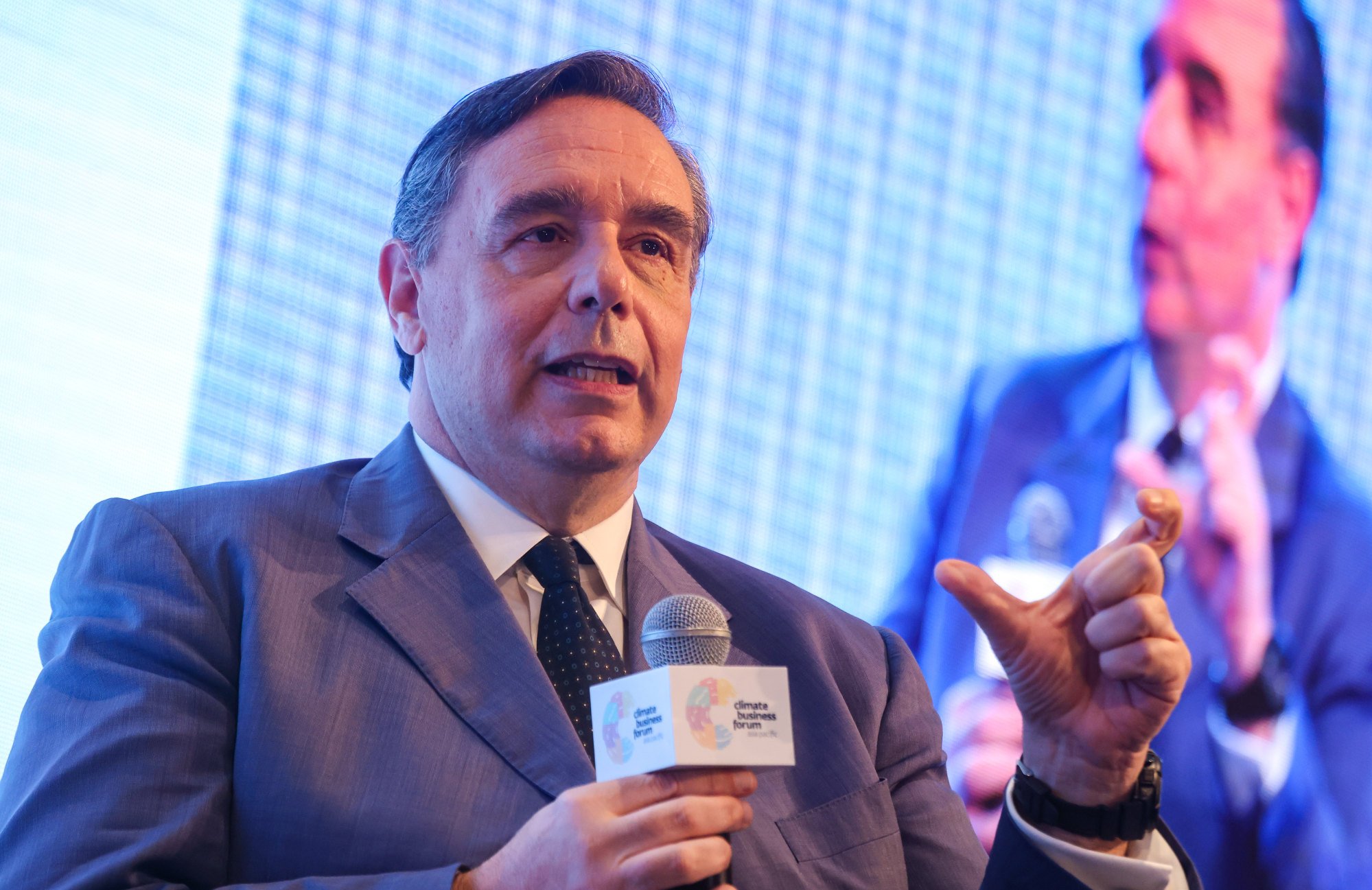
Hong Kong Green Week: banks urged to rethink and review funding criteria for energy transition projects
- Banks are trying to develop new metrics to help them assess the feasibility of energy transition projects that utilise new technologies, Citi’s Aveline San says
- Asia requires at least US$1.1 trillion of investment a year to meet climate mitigation and adaptation needs, but faces a funding gap of US$815 billion, IMF says
Banks need to adopt more forward-looking and long-term metrics on risk-return assessments to meet the growing financing needs of energy transition projects in Asia, according to top bankers.
The financing gap as well as opportunities for energy transition in the region are huge, but finding viable projects and financing solutions is a challenge, banking executives said at the Climate Business Forum on Tuesday, organised a part of the Hong Kong Green Week.
The challenge for banks is to how to rethink and recalibrate their established risk-taking metrics, according to Aveline San, CEO of Citi Hong Kong and Macau.
“So when we see a lot of more innovative technology projects with a very short operating history, it’s automatically [considered] high risk,” she said. “A lot of us are now trying to develop newer metrics that will help us to be more forward-looking and also look into longer term projects.”

Governments, central banks, financial supervisors and multilateral institutions must coordinate and develop a comprehensive strategy to attract more private capital, the report added.
Investment on such a massive scale is needed to meet the global aim to contain global warming at 1.5 degrees Celsius from pre-industrial levels, so as to avoid the worst effects of extreme climate events.
Another solution for funding risky projects with novel technologies is “blended finance”, bankers said.
Surendra Rosha, co-CEO of Asia-Pacific at HSBC, said the bank has created a structure that blends philanthropy with funding from institutional investors.
As part of such an initiative, HSBC formed a joint venture with Singapore’s Temasek Holdings in 2021 to provide blended finance to sustainable infrastructure projects in Asia, with the aim of disbursing more than US$1 billion in five years.
Blended finance mobilises public or philanthropic funds to provide a cushion against projects’ risks, making them more attractive to commercial investors. This helps pull in private capital that would otherwise not have been available.
From a borrowers’ perspective, long-term capital is critical for developing sizeable projects, said Harsh Shah, CEO of Indigrid, a power sector infrastructure investment trust in India backed by the private equity firm KKR.
“We need long-term capital for building long-term assets,” he said.

Asia-Pacific, with 4.7 billion people, accounts for more than half of the world’s energy consumption, and is the main source of greenhouse gas emissions, said Riccardo Puliti, regional vice-president for Asia-Pacific at International Finance Corporation.
“While the opportunities [for climate mitigation] are huge, challenges remain in mobilising climate actions,” he said. “Most countries are lacking the policy response that is needed to reduce fossil-fuel subsidies.”
The development arm of the World Bank Group, which focuses exclusively on the private sector in emerging and developing markets, has extended some US$51 billion of climate finance in the past five years, Puliti said.
For certain carbon-intensive sectors that are difficult to decarbonise, heavy upfront investment in low-carbon technology and facilities is the biggest barrier, according to some finance executives.
“[It’s] not just about financing decarbonisation technology start-ups, we [also] need to be able to scale them up by providing patient and flexible capital,” said Emily Woodland, managing director and head of sustainable and transition solutions in Asia-Pacific at BlackRock, the world’s largest asset manager with US$10 trillion in assets.
“The scale of the transition being as massive as it is, we need to find the lowest cost of capital in every point across the asset-class spectrum, from private equity to private credit and infrastructure all the way to public markets.”
Meanwhile, credibility of delivering real climate benefits will be important for mitigation project developers and their financing partners, IFC’s Puliti said.
“In the years to come, we will see more reputational risks in our [climate] investments, on top of credit and financial risks,” he said. “Making sure that we do the right thing to the best of our capacity [is key].”





